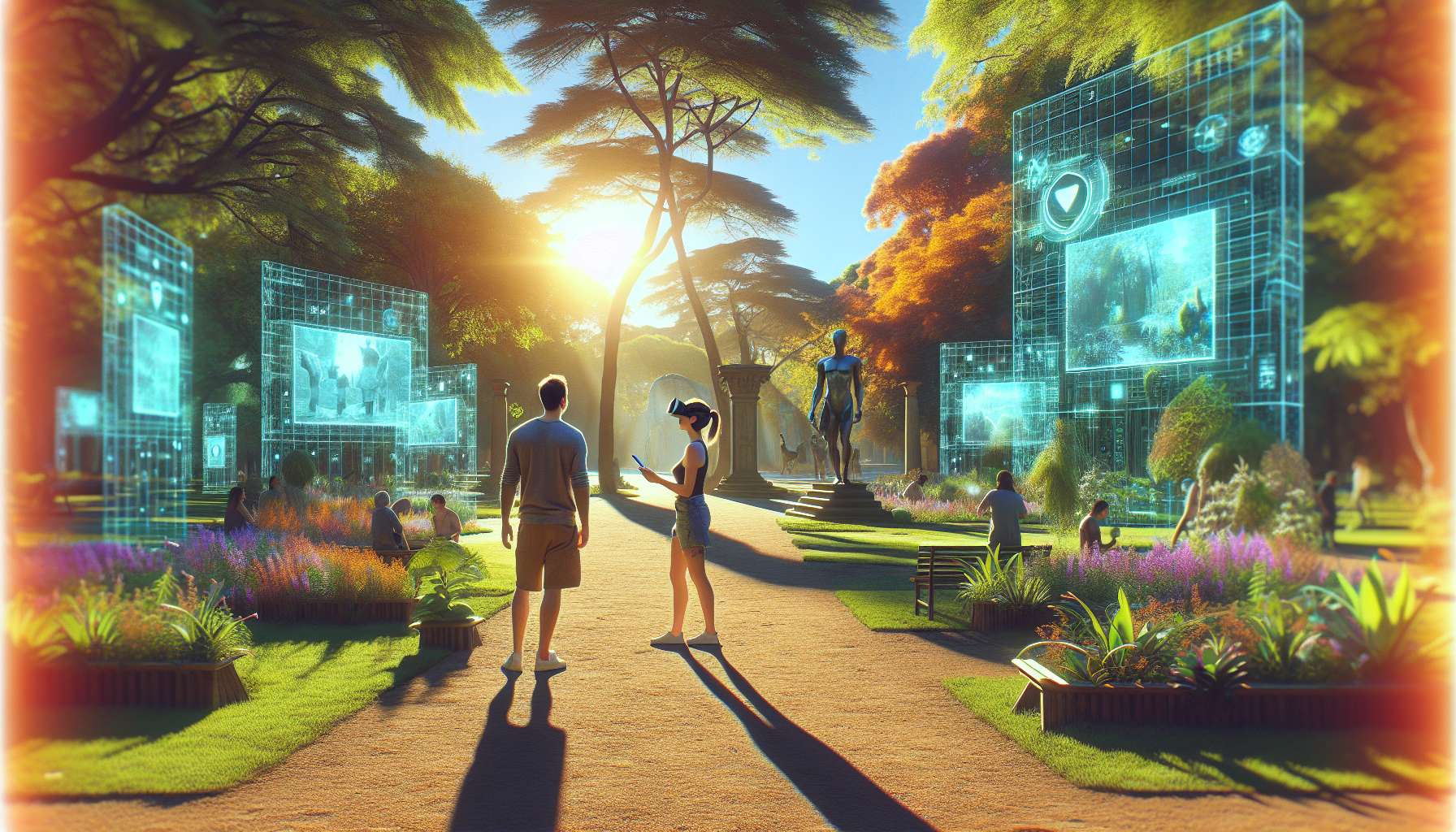Unlocking the Magic of Augmented Reality in Parks and Zoos
Imagine strolling through a lush park or wandering through a zoo, and suddenly, the world around you comes alive with virtual creatures, interactive exhibits, and immersive experiences. Thanks to the wonders of augmented reality (AR), this is no longer a distant dream but a reality that is transforming the way we engage with nature and wildlife. In this article, we will explore how AR is maximizing visitor engagement at parks and zoos, creating unforgettable experiences for people of all ages.
1. Bringing Animals to Life
AR technology allows visitors to witness the magic of wildlife up close and personal. By simply pointing their smartphones or tablets at designated markers, visitors can see virtual animals come to life right before their eyes. Whether it’s a majestic lion roaring or a playful dolphin leaping out of the water, AR brings a new level of excitement and interactivity to traditional zoo exhibits. This immersive experience not only educates visitors about different species but also fosters a deeper connection and appreciation for the natural world.
2. Interactive Learning Experiences
Gone are the days of passive learning at parks and zoos. With AR, visitors can actively engage with exhibits through interactive games, quizzes, and challenges. Imagine embarking on a scavenger hunt to find hidden virtual creatures or solving puzzles to unlock fascinating facts about the animals around you. AR technology turns learning into a thrilling adventure, making it an ideal tool for educational institutions and families alike.
3. Enhancing Conservation Efforts
AR is not just about entertainment; it also plays a crucial role in raising awareness about conservation efforts. By overlaying information about endangered species, habitat destruction, and climate change, AR experiences at parks and zoos can inspire visitors to take action and make a positive impact on the environment. Through immersive storytelling and compelling visuals, AR creates a sense of urgency and empathy, encouraging visitors to become advocates for wildlife conservation.
4. Personalized Experiences
One of the most exciting aspects of AR technology is its ability to personalize experiences based on individual preferences. Visitors can customize their AR journey, choosing which animals they want to learn more about, which exhibits to explore, and even which language they prefer for narration. This level of personalization ensures that every visitor has a unique and tailored experience, enhancing their overall satisfaction and engagement.
5. Extending the Experience Beyond the Visit
AR technology doesn’t end when visitors leave the park or zoo. Many establishments now offer companion mobile apps that allow users to continue their AR adventures from the comfort of their homes. These apps provide additional information, interactive games, and even virtual tours, ensuring that the excitement and learning continue long after the visit. By extending the experience beyond the physical boundaries, parks and zoos can maintain a lasting connection with their visitors.
Embrace the Future of Parks and Zoos
As technology continues to evolve, the possibilities for AR in parks and zoos are limitless. From virtual reality safaris to holographic animal encounters, the future holds even more exciting advancements. By embracing AR, parks and zoos can create unforgettable experiences that captivate visitors, educate them about wildlife and conservation, and inspire them to become stewards of the natural world. So, the next time you visit a park or zoo, keep an eye out for the wonders of AR, and prepare to be amazed!





